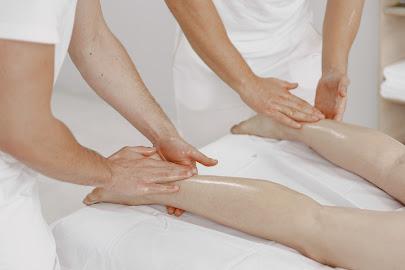Define Neck pain physical therapy
One of the most frequent treatments for persistent neck discomfort is physical therapy. Most neck pain physical therapy Las Vegas programs entail using therapies to alleviate pain and stiffness long enough to begin an activity program that strengthens and stretches the neck. Physical therapy methods and exercises and the length of the treatment plan might differ from person to person.
Goals of Neck pain physical therapy
The following are common aims of neck pain physical therapy:
•
Develop techniques to avoid
discomfort from returning
•
Reduce pain and stiffness
•
Improve head and neck range
of motion
Even if discomfort cannot be fully eradicated, physical
therapy can help improve neck posture and function for everyday activities.
When neck pain physical
therapy May Be Recommended
Neck physical therapy may be suggested in a variety of
situations, including:
•
Unspecified chronic pain. When neck
discomfort persists or returns, pinpointing the specific location or mechanism
of pain can be challenging. Even if you don't have a diagnosis, strengthening
the neck muscles can help them support the cervical spine and become more pain
resistant.
•
Recovering from injury. Trauma,
for example, can harm the soft tissues and joints of the neck, causing pain and
stiffness that can endure for weeks or even months. A physical therapy program
can help relieve discomfort and restore normal neck function.
•
Recovering from surgery. Some neck
procedures can cause substantial pain and stiffness in the weeks and months
following the procedure. (ACDF) the
operation, for example, entails fusing two or more vertebrae in the neck, which
might change the movement of several necks and upper back muscles. As the
muscles are reconditioned, physical therapy may assist in working through
stiffness, enhance neck function, and lessen or prevent uncomfortable spasms.
Physical Therapy Treatment Methods
Neck pain physical
therapy treatment Methods
Physical treatment is divided into two types.
1.
Passive physical therapy entails
therapies being administered without the patient exerting any effort. There are
various treatment options available, including ice packs, heat therapy, massage
therapy, ultrasound, electrotherapy, and more. The purpose of passive physical
therapy is to aid in the reduction of pain and edema.
2.
Active physical therapy consists
of the patient moving their own body through stretches and exercises. These
muscles may become less uncomfortable and better able to maintain appropriate
posture as their strength and flexibility improve, reducing stress on the
cervical spine.
Efficacy of neck pain
physical therapy
Physical therapy has been studied extensively to see if it
can assist with spine-related discomforts, such as in the lower back or neck.
For example, neck pain physical therapy's role in relieving neck discomfort and
improving range of motion is supported by moderate to high evidence in the
current medical literature. 2-5 Physical therapy has been shown to have even
more advantages when paired with other therapeutic approaches, such as aerobic
activity, in some studies.
Active Neck pain physical
therapy
Physical therapy focuses on improving the neck's strength
and flexibility for treating neck pain. These objectives are best attained by
vigorous workouts that target the neck and surrounding muscles, with the
workload steadily increasing over time.
Types of Active Physical
Therapy
Many methods of active physical therapy for the
neck are described below:
•
Neck stretches and exercises.
To educate the muscles that link directly to the cervical spine, a variety of
stretches and exercises may be given. The chin tuck, for example, entails
gazing ahead (rather than up or down) and softly pushing the chin straight
back.
•
Core and back strengthening. If
physical treatment is prescribed to enhance neck strength and function, the
back and core muscles surrounding the trunk are also likely to benefit.
Furthermore, all of these muscle groups act together to support the spine and
improve posture.
•
Aerobic activity. As the
cardiovascular system works tougher for the length of the activity, blood flow
and breathing levels are increased. Cycling on an upright or reclining bike,
swimming with a mask and snorkel to avoid neck movement, and brisk walking are
all examples of low-impact aerobics sports that do not jolt the spine.
•
Aquatic exercise. A pool may
be used for several workouts. Water's buoyancy can assist relieve strain on the
spine while still enabling the muscles to perform. Aquatic exercise may be
indicated if neck discomfort is severe or accompanied by shoulder and back
pain.
Depending on the patient's unique therapy goals, these forms
of active physical therapy and others can be combined or employed at different
stages of the treatment plan.
Why choose us?
Whether you have a recent neck injury or have been
experiencing neck pain for some time, feel free to contact us for a short or
long period to see what we can do to alleviate the pain! We provide a variety
of networking and training opportunities both locally and nationally. Jayne Hyduk
Med Spa has been serving our firm for over sixteen years and is the premier
non-profit organization in the massage therapy industry. Also Know About



Comments
Post a Comment